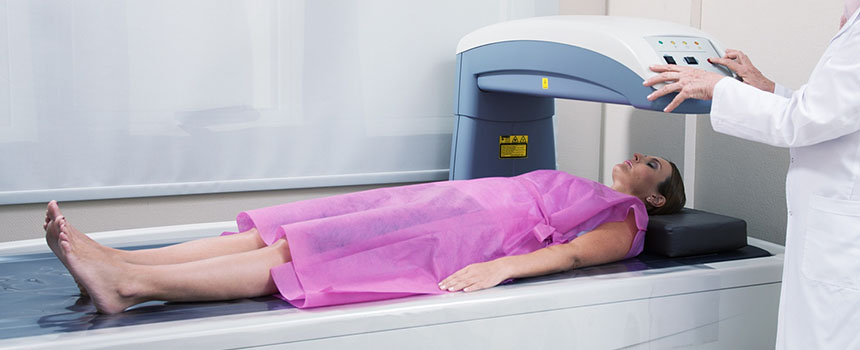
Bone Densitometry
What Is Bone Densitometry?
A bone densitometry test is like an X-ray that measures the density of bones. It is primarily used to detect osteoporosis- a disease in which the bone's density and minerals, and density are low, and the risk of fractures is increased. A bone densitometry scan measures the calcium content of the bone, usually in the lumbar region (the lower back) and the hips.
When do I need a Bone Densitometry test?
Although osteoporosis is more common in older women, men can also develop the condition.
Regardless of your gender or age, your doctor may recommend a bone densitometry test if you have:
- Lost height. People who have lost at least 3.8cm in height may have compression fractures in their spines. Osteoporosis is one of the main causes of compression fractures.
- Fractured a bone. Fractures can occur when a bone becomes so fragile that it breaks more easily than expected.
- Taking certain medication. The long-term use of certain steroid medications, such as prednisone, interferes with the bone-rebuilding process — this can lead to osteoporosis.
- Had a drop in hormone levels. Most women experience a natural drop in hormones after menopause or after certain cancer treatments. Some treatments for prostate cancer reduce testosterone levels in men. Lowered sex hormones tend to weaken bones.
Preparing for Bone Densitometry test
If you think you may be pregnant, notify the Radiographer.
Before the test, you can eat, drink, and take any medications as you normally would. However, do not take calcium supplements or medications that contain calcium for 24 hours before your bone densitometry test. You will be required to remove any metal items before the examination.
What to expect
You will need to wear a gown for the test. During the examination, you will lie on a padded, flat table. Next, a mechanical arm-like device will pass over your body, emitting low-dose radiation. Areas that will be focused on include the lumbar, the vertebrae, the femoral necks, and the wrists and forearms. The procedure is generally painless and only takes about 10 to 30 minutes.
For best results:
Cooperation with the Radiographer is important for the success of the examination. You will need to remain as still as possible throughout the exam.

